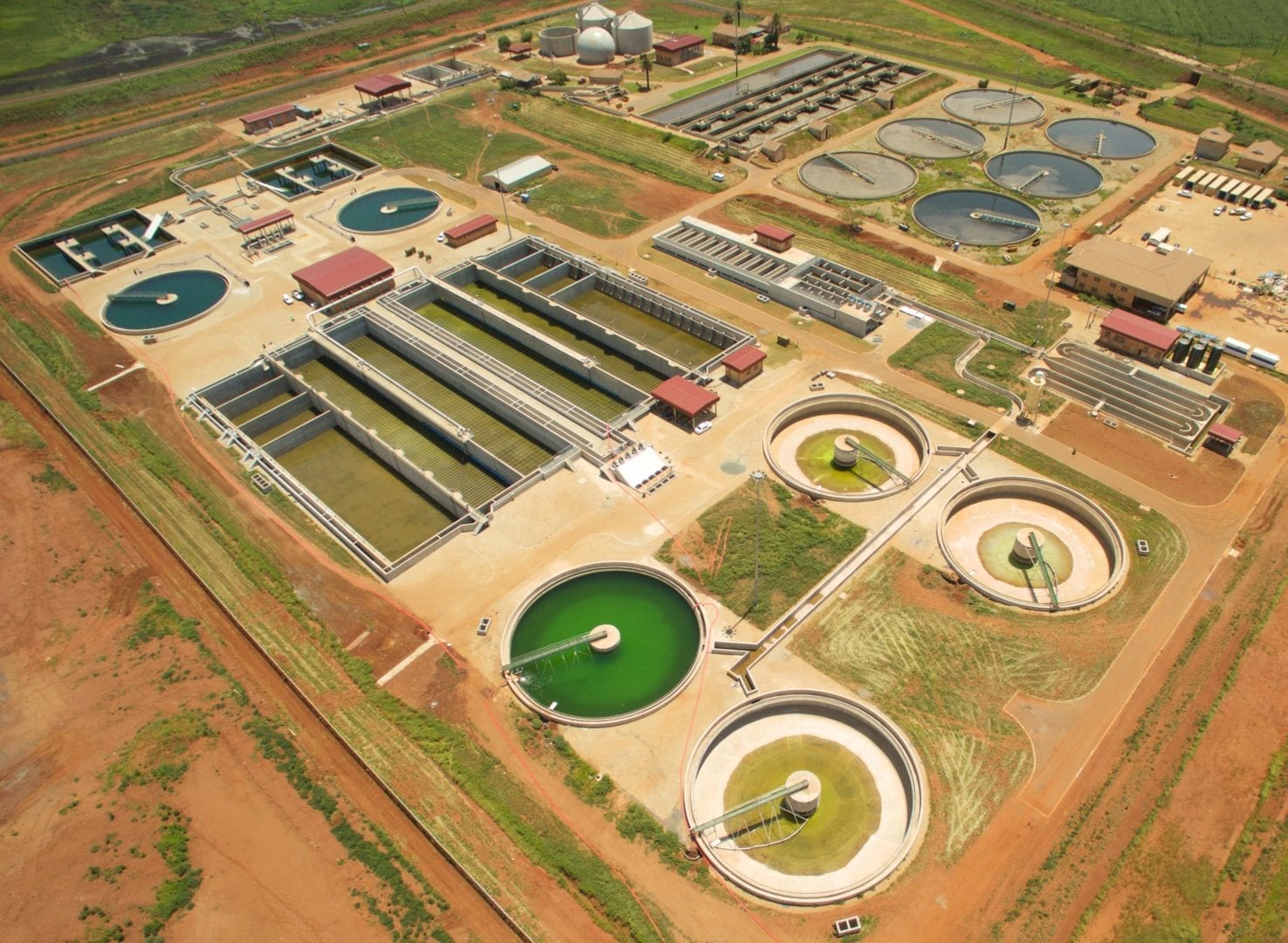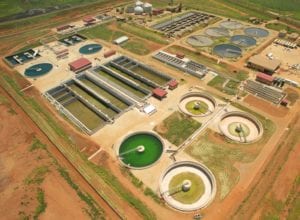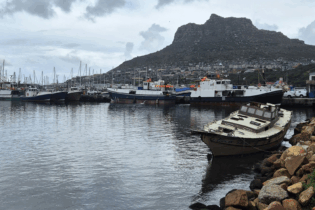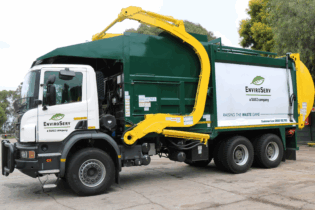
IMIESA speaks to ERWAT’s managing director, Tumelo Gopane, about the Welgedacht Wastewater Treatment Works extension in Springs and how this ties in with broader capacity expansion plans for the Gauteng region.
What were the constraints facing the existing Welgedacht plant?
TG The existing 35 Mℓ/day Welgedacht WWTW, situated near Springs, was completed in 2003 and was struggling to keep pace with rapid urbanisation. Eventually, it was running over capacity, and by 2008, the plant was already receiving 59 Mℓ/day against a design of 35 Mℓ/day.
This necessitated a new Module 2 extension of 50 Mℓ/day to cope with the increased demand for wastewater treatment from key areas that include Benoni, Boksburg, Springs, Bakerton and Daveyton. The new extension actually comprises two 25 Mℓ/day modules to improve efficiencies and maintenance. At 85 Mℓ/day, the plant is now running at full capacity. Further upgrade plans are in progress to meet downstream residential and industrial demand. This will entail the addition of a further 50 Mℓ/day. Our process technologies are already in place. Plus, our inlet works are already designed to cope with 135 Mℓ/day.
Were there any construction challenges along the way?
Numerous environmental and hydrological impact studies had to be conducted at Welgedacht. The final plant effluent runs into the Blesbokspruit, which is a Ramsar site – an internationally conserved wetland and the only one in Gauteng. We are proud to report that we have surpassed 90% environmental compliance.
Can you expand on key technologies employed?
Unique aspects include the adoption of bubble surface aeration, as opposed to surface aeration. Bubble aeration is far more energy efficient. Plus, ERWAT has improved the design of the sand filters, which promotes downstream efficiencies in terms of removing residual solids in the water. ERWAT is also reducing the impact of chlorine through a de-chlorination plant. This stage in the process is deployed only if the process required too much chlorine in killing microorganisms in the water. It’s not ideal to release water with high chlorine content into natural water courses.
Methane is being captured at the top of the digesters and is burnt in order to drive a boiler used to generate stream. The stream is used to heat up the sludge in the digesters. This process can still be improved since some of the methane is flared into the atmosphere. In future, methane-driven generators will be sourced. They will be used to supply about 30% to 40% of the plant’s requirements, whilst utilising their exhaust energy to heat up the sludge. In the near future, thanks to advances in technology, clarified water will be sold back to the market for industrial purposes at a much lower cost compared to potable sources, and with minimal environmental impact. South Africa will need to invest in clarified water pipes to harness this potential. Currently, this water is all released back into natural water courses. A percentage will always be released to sustain ecosystems.
How are plant designs like Welgedacht helping to lower emissions?
Every ERWAT facility is being repositioned to ensure that conventional grid electricity consumption is reduced. One of the ways to do this is by harnessing alternative energy solutions, an area where WWTWs have reasonable resources. ERWAT’s entire energy consumption is about 15 MW.
Methane will be used to power the plants; and all buildings and usable surfaces will be covered with solar panels.
These interventions will:
- reduce methane emissions into the atmosphere
- reduce the carbon footprint from fossil fuel energy via the national grid
- improve the biological and solids loading of water released into streams.
Does ERWAT support the reprocessing of wastewater for potable use?
Water reuse innovations in water-scarce South Africa must be a priority. As for sludge, this can be processed to produce a non-toxic, virus- and bacteria-free agricultural fertiliser and/or incinerated in order to generate electricity.
At Welgedacht, ERWAT has acquired a series of belt presses that will be used to press the sludge into a cake. The residual water removed will be sent back to the clarifier for reprocessing. ERWAT is hoping to work with the agricultural industry, as well as the coal and charcoal industries, in beneficiating the sludge.
With regard to treated wastewater being used as a potable source, this is very possible. The process step from clarified to potable water is not very far. However, it will need a complete mindset shift. As time goes by and freshwater resources become scarcer, South Africa will be forced to think along these lines.
What does the future hold for ERWAT?
Industrial and population growth will lead to a rising demand for wastewater treatment capacity. To this end, and according to a facilities development plan, ERWAT’s approach will focus on providing the right-sized works in the best geographical location, at the most economic cost, incorporating the finest and most appropriate available technology.
ERWAT is embarking on a programme to update its Bulk Wastewater Master Plan, which will be overlaid on to Ekurhuleni Metropolitan Municipality’s Spatial Development Framework, which incorporates the Aerotropolis. This master plan has a 50-year horizon.
The outcome of this process will result in the closure of smaller wastewater treatment works that no longer deliver the required efficiencies, the building of new, state-of-the-art facilities, and the extension of existing works. Our new Welgedacht extension is a prime example, which will be used as a model plant. ERWAT is also looking into building a state-of-the-art control room, which will measure, monitor and control all aspects of our plants, including lighting and access control.
There are plans to strengthen ERWAT’s R&D Department, with a dual emphasis on natural sciences (focusing on the process) and engineering (the equipment, machinery and instrumentation). Reliability engineering is a priority to ensure high plant availability.
Additionally, ERWAT will be focusing on expanding its commercial footprint across South Africa, as well as the rest of the continent: we need to collaborate in getting wastewater treatment plants to the requisite standards, while being commercially viable in the process.
There is a need within private sector industry (factories and mines) to collaborate with ERWAT in order to comply with licence requirements regarding what is released into the municipal network, as well as natural water courses.
Welgedacht WWTW extension project milestones
Project planning commenced some eight years ago and actual construction took around four
years to complete
June 2012 marked the start of the earthworks programme
The mechanical, electrical and electronic work commenced in October 2012
Civils works commenced in February 2013
Full commissioning and official handover took place in August 2016
Total project cost amounted to some R590.5 million









